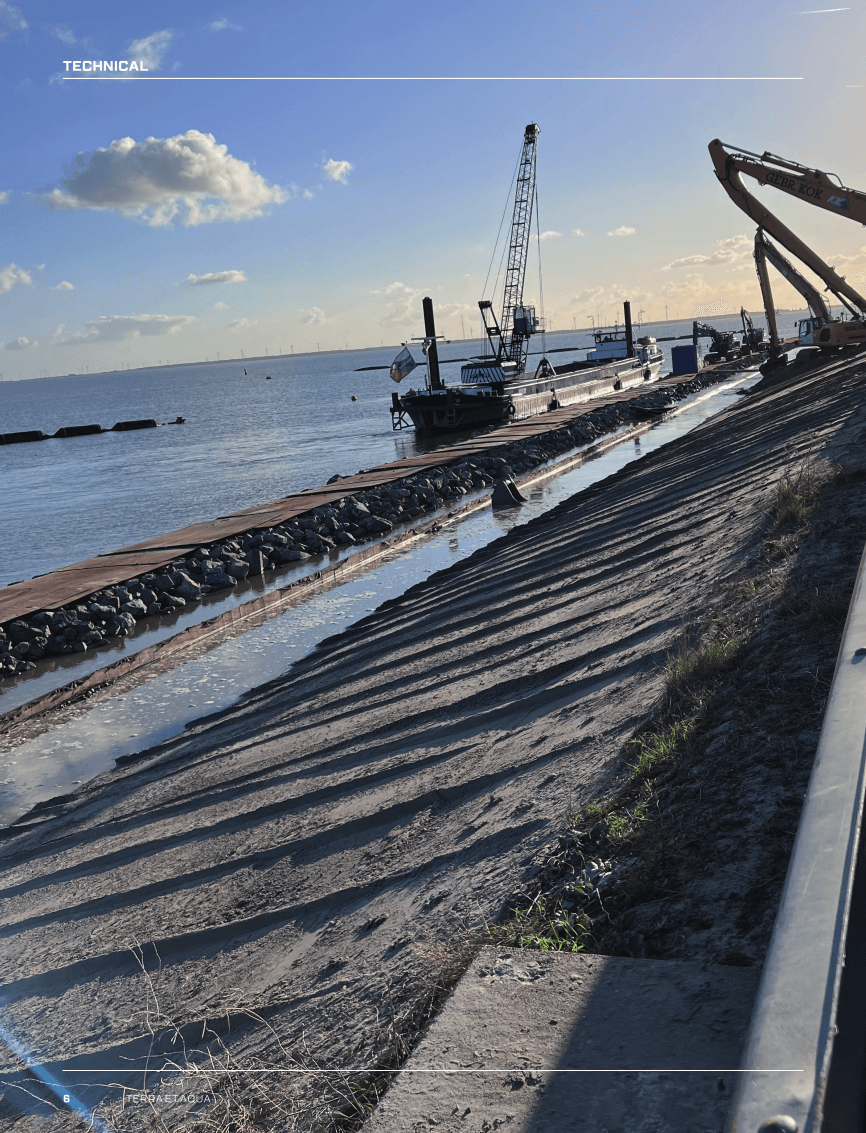
Upscaling seagrass restoration with insights from seed-sediment dynamics
Seagrass restoration is increasingly recognised for its potential to enhance biodiversity and contribute to carbon sequestration. However, planting methods are largely based on manual techniques, posing challenges for upscaling and implementation as nature-based solutions (NbS) within the dredging industry. To address this, techniques to combine sediment nourishments with seed-based seagrass restoration are explored. Seed settlement behaviour is investigated via laboratory experiments, analysing seed settling velocities and distribution in various sediment concentrations, revealing the importance of grain size and sediment dynamics. These findings lay the groundwork for innovative, large-scale restoration techniques leveraging traditional dredging methods, with pilot projects planned for 2025.

The erodibility of trisoplast and clay
The Netherlands has almost 4,000 km of dykes. Over the past decades, a significant amount of clay has been used within these dykes for reinforcement. This layer of clay is essential as water barrier and to prevent the construction from collapsing due to erosion. Clay of the right quality is becoming less and less available, particularly because the usage requires a minimum thickness of 1.0 to 2.0 metres. Therefore, alternative materials such as Trisoplast are being researched as a suitable replacement for clay.

